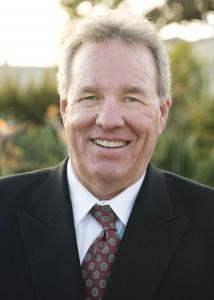I have been in private practice for 32 years and have offices in two Southern California cities with a total of nine year-round employees. We try to provide all the services our clients need. In addition to preparing returns for about 1300 tax clients, we also do monthly accounting for approximately 250 businesses. I have both my Securities & Exchange License and Insurance License to help provide my clients with retirement and financial planning.
The practice has grown over the years, but it had also outgrown my ability to manage it comfortably. You can only directly manage so many people at one time, and I had passed that point.
Last summer I started feeling the pressure. The practice was starting to spin out of control. If I couldn't keep things organized, I wouldn't be able to keep delivering a high level of service to an expanding client base and would wind up losing customers instead.
Last fall I received a newsletter from Sterling and sent in a postcard to get more information. They sent me a DVD covering their program and it looked like they had information I could use. It was certainly true that what I was doing wasn't working and I needed to find something that did work.
The Sterling program turned out to be just that. I started doing their courses in December, but due to the holidays and impending tax season, I wasn't able to complete my training, but even so, it made a huge difference.
The biggest area I learned so far was how to read people, how to pick good employees and how to get them to care about their jobs. This has helped me create a smoother running office. For example, just before I did the training, there was an incident with an employee who refused to do something I had asked her to do and was very adamant about it. This caused some conflict between us which then started to affect others in the office. I recognized this was a problem, but wasn't sure how to solve it. But after a week of training at Sterling, it became crystal clear what I needed to do. Not only did I resolve the conflict, but she is now one of my best employees.
In addition to the training I did at Sterling's offices, the program also includes weekend workshops which the staff can attend. My staff and I attended one in January. Everybody loved the workshop and got a lot out of it. We will be going to another one in July.
Now, as I said, I have done only part of the training and it has helped me with communication and managing personnel. It has had a big impact in that area, not just in the office, but in other areas of my life as well. I have a much better relationship now with my wife and my three daughters.
If that were all that Sterling had to offer, I would be satisfied with what I had gotten out of it. But there is much more and this summer I will be going back to finish my training including how to better organize the business and to manage it using Management by Statistics. I will also be working with my consultant on better ways to sort out the job duties in the office for higher production and greater efficiency. I love the program and can't wait to get the rest of it in place.
Bill Slattery, E.A.

